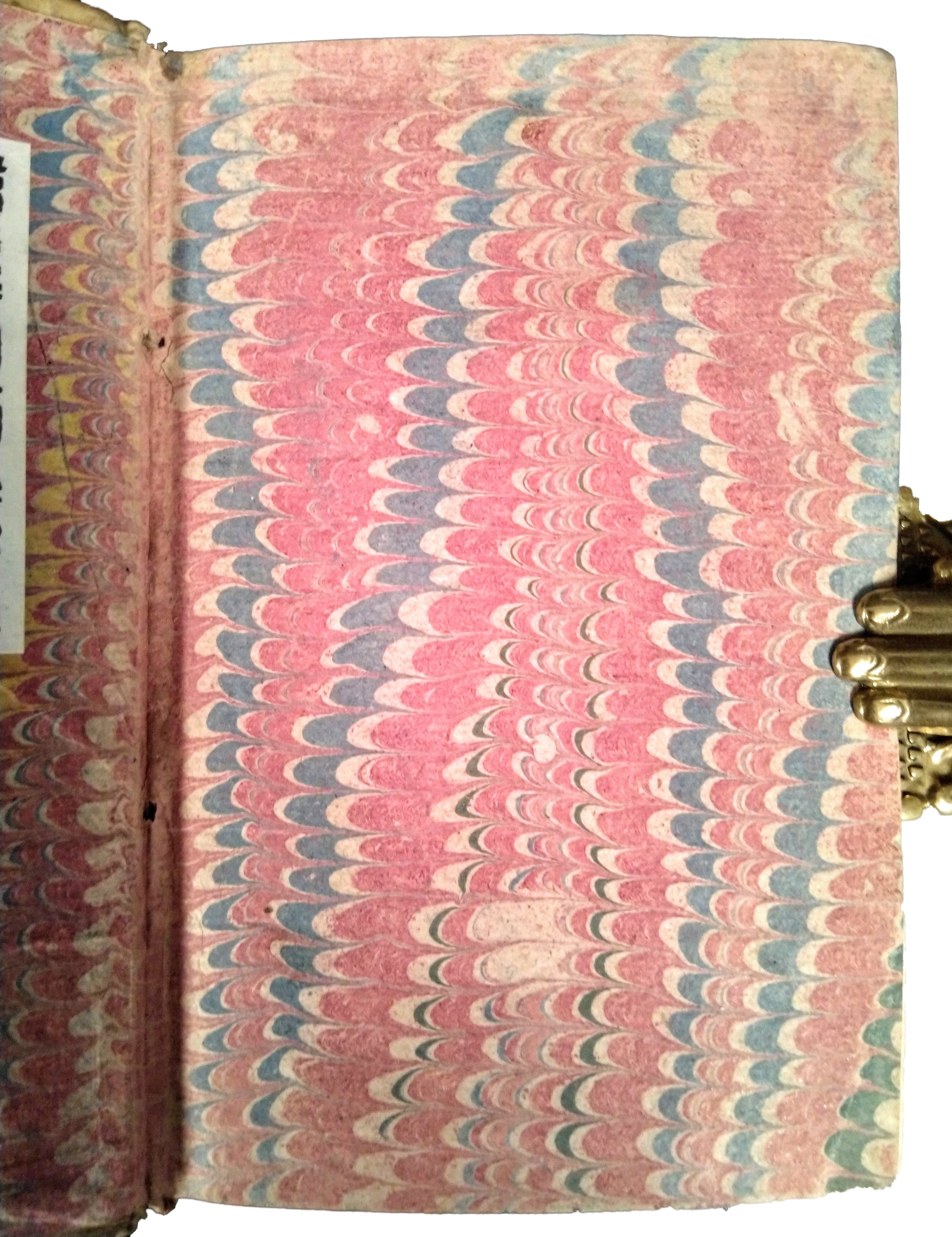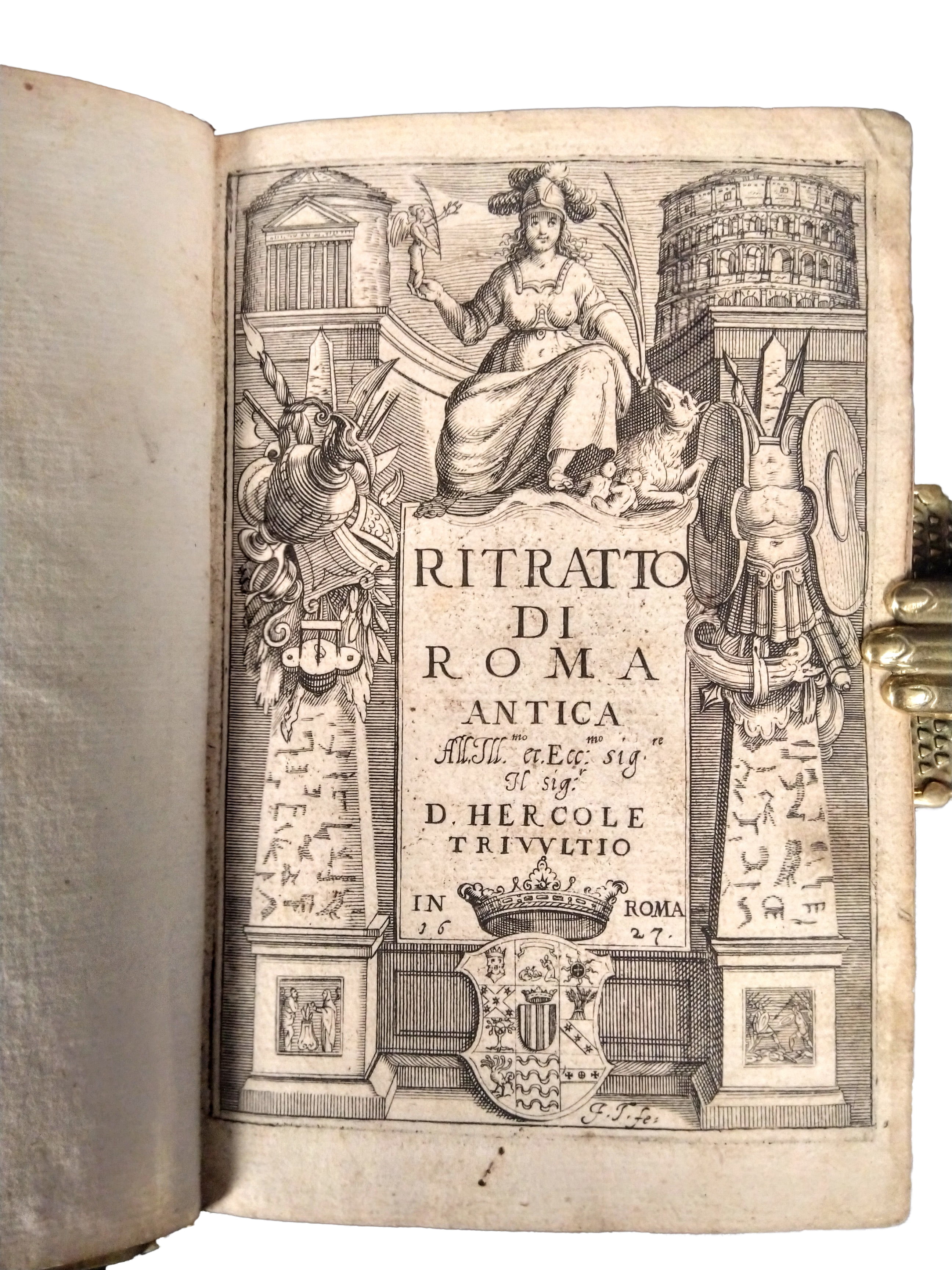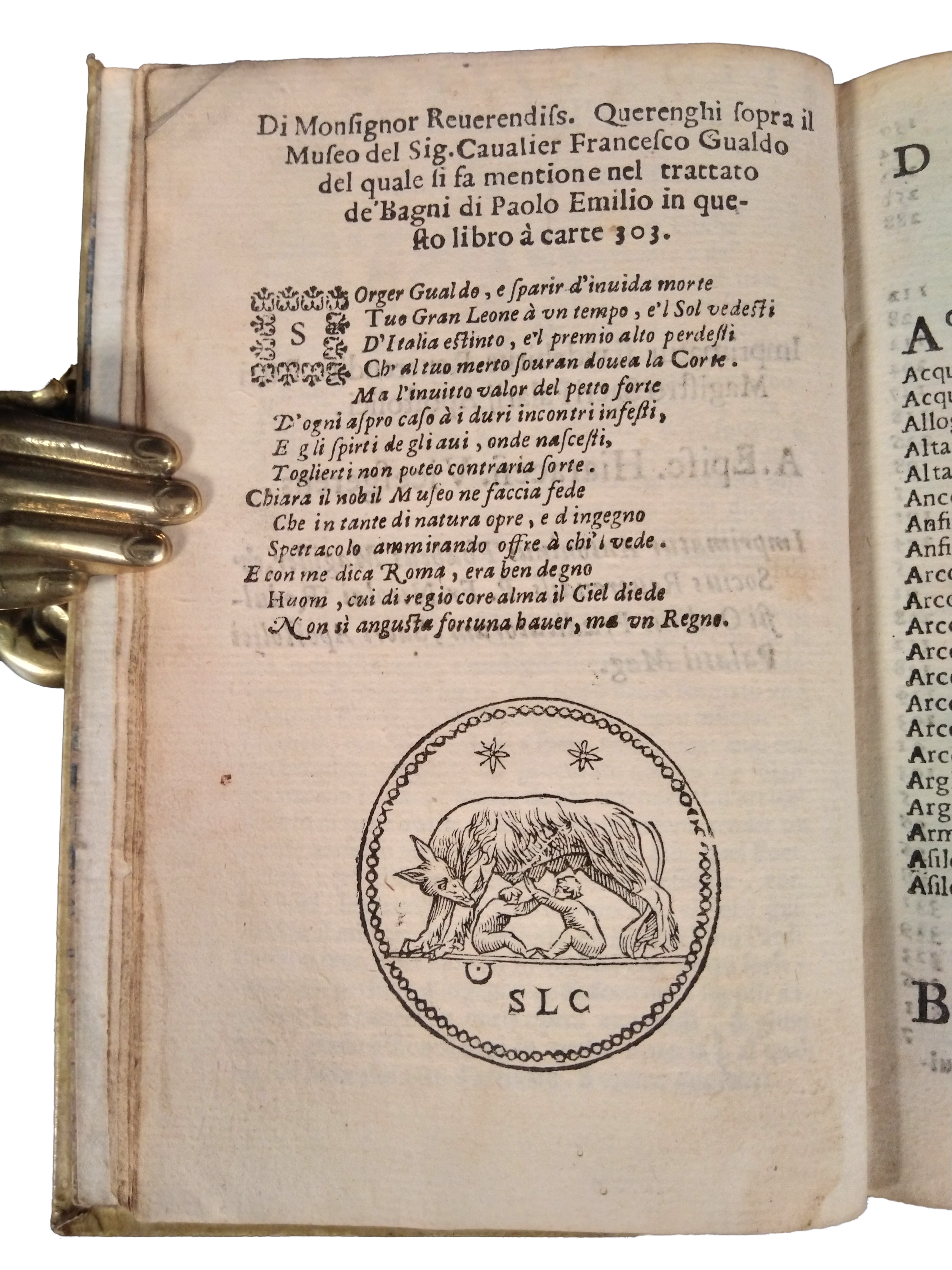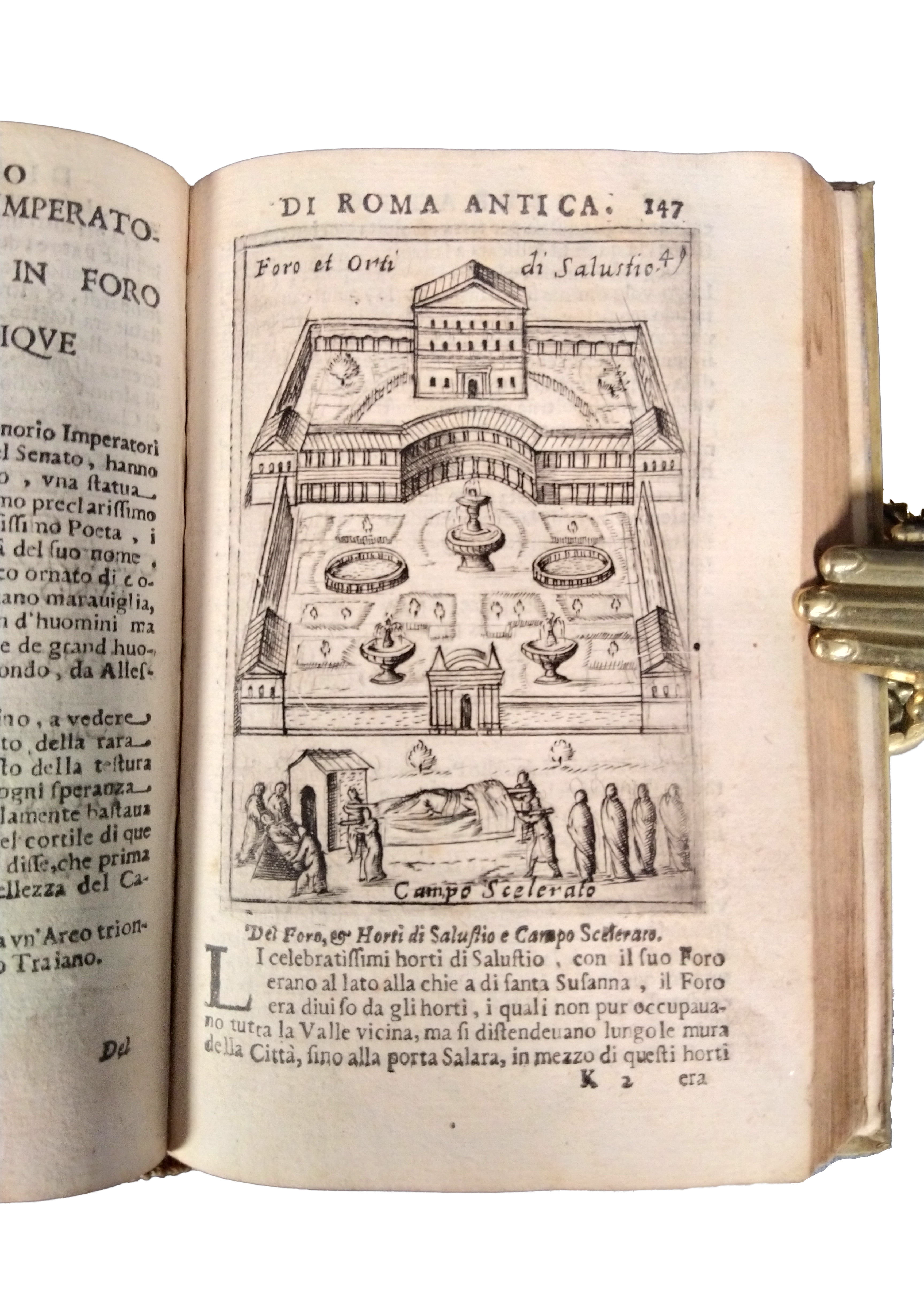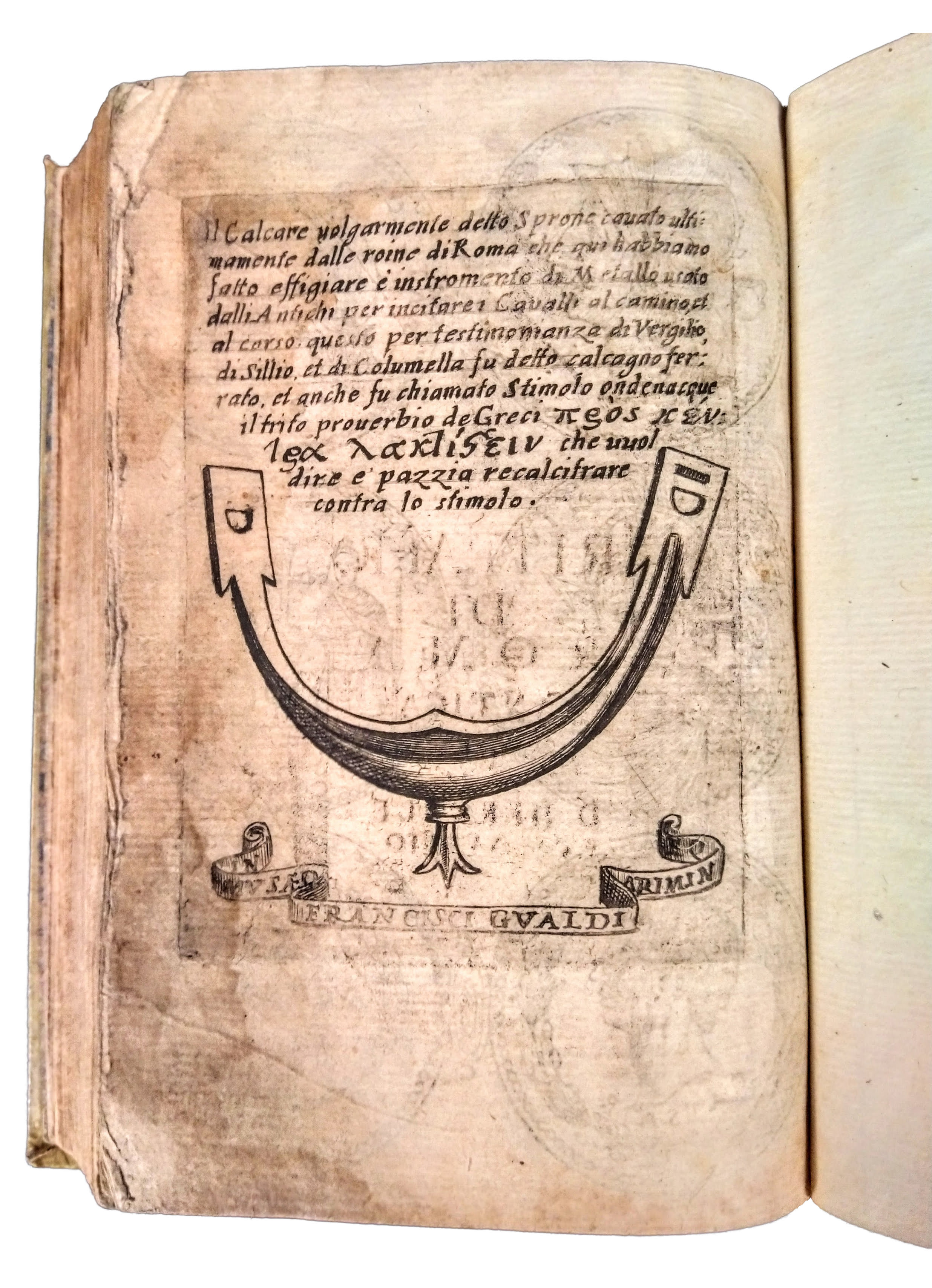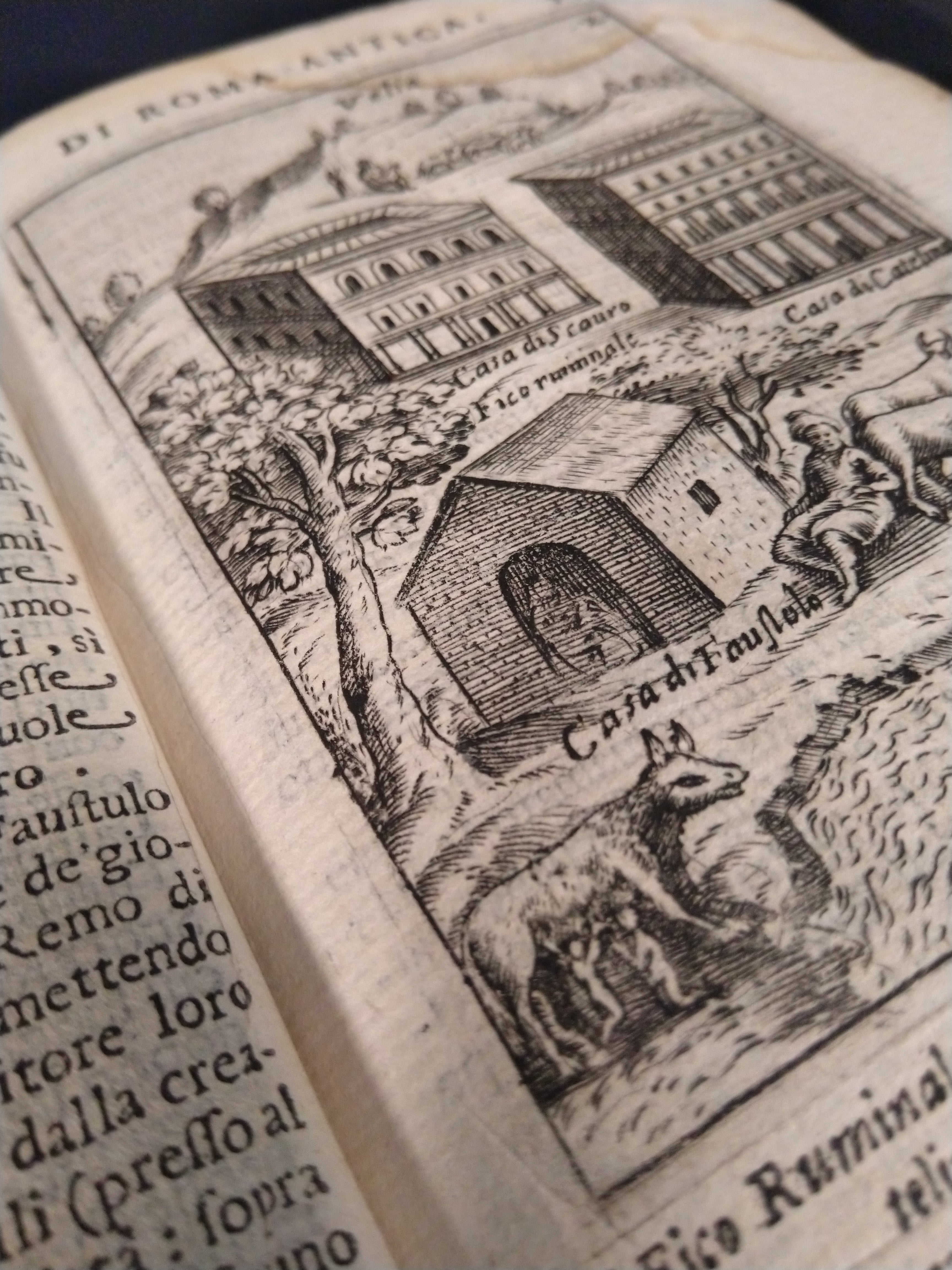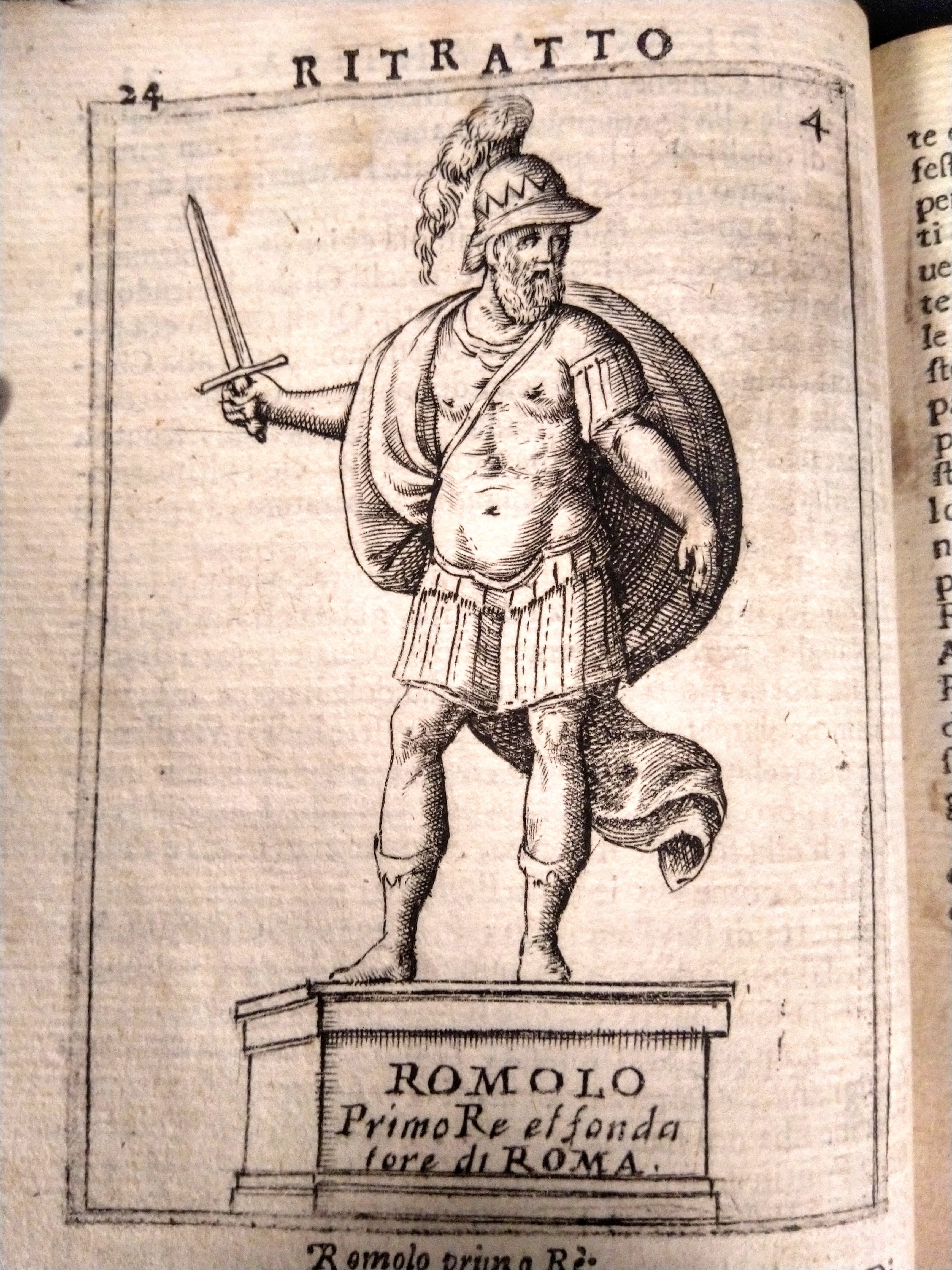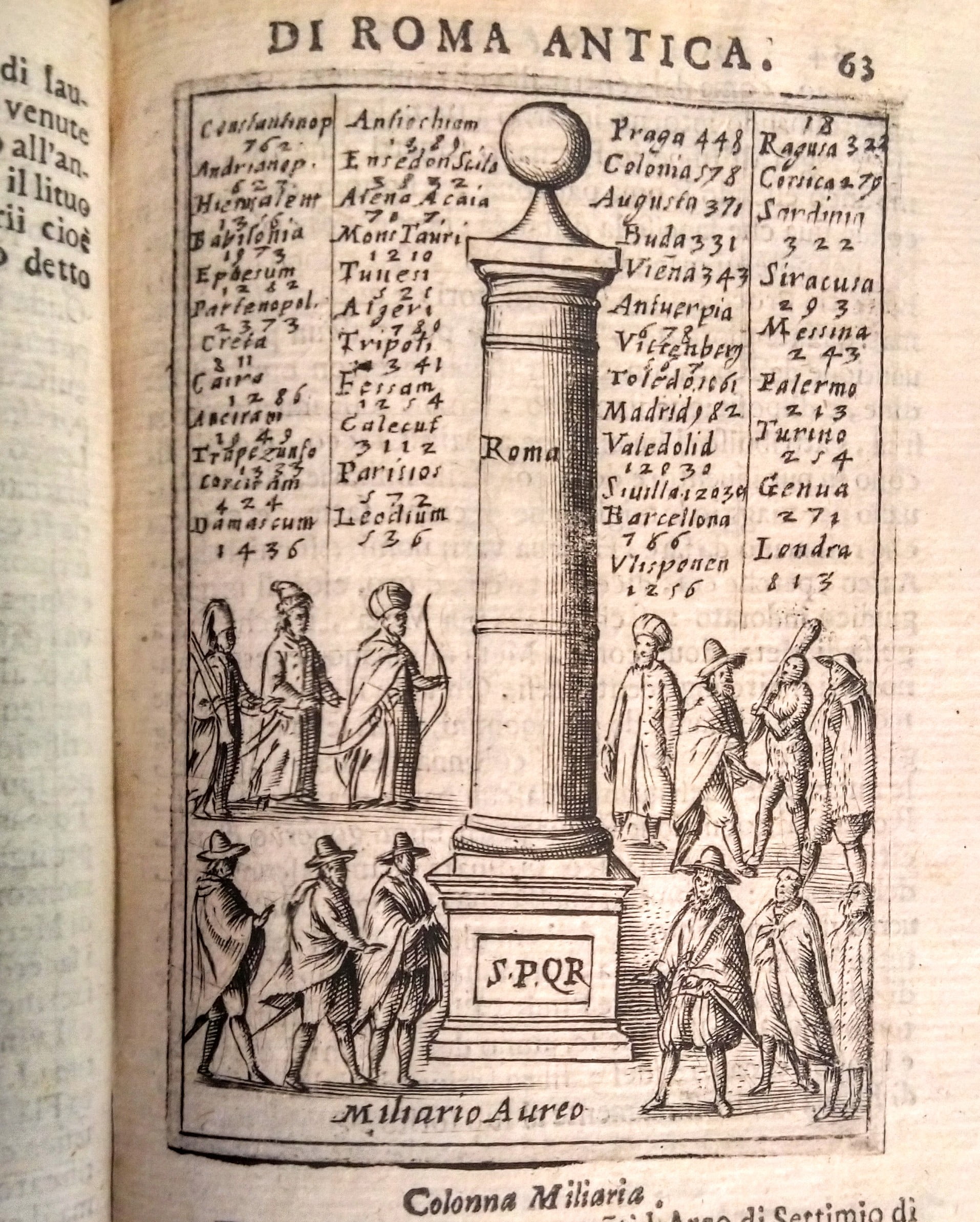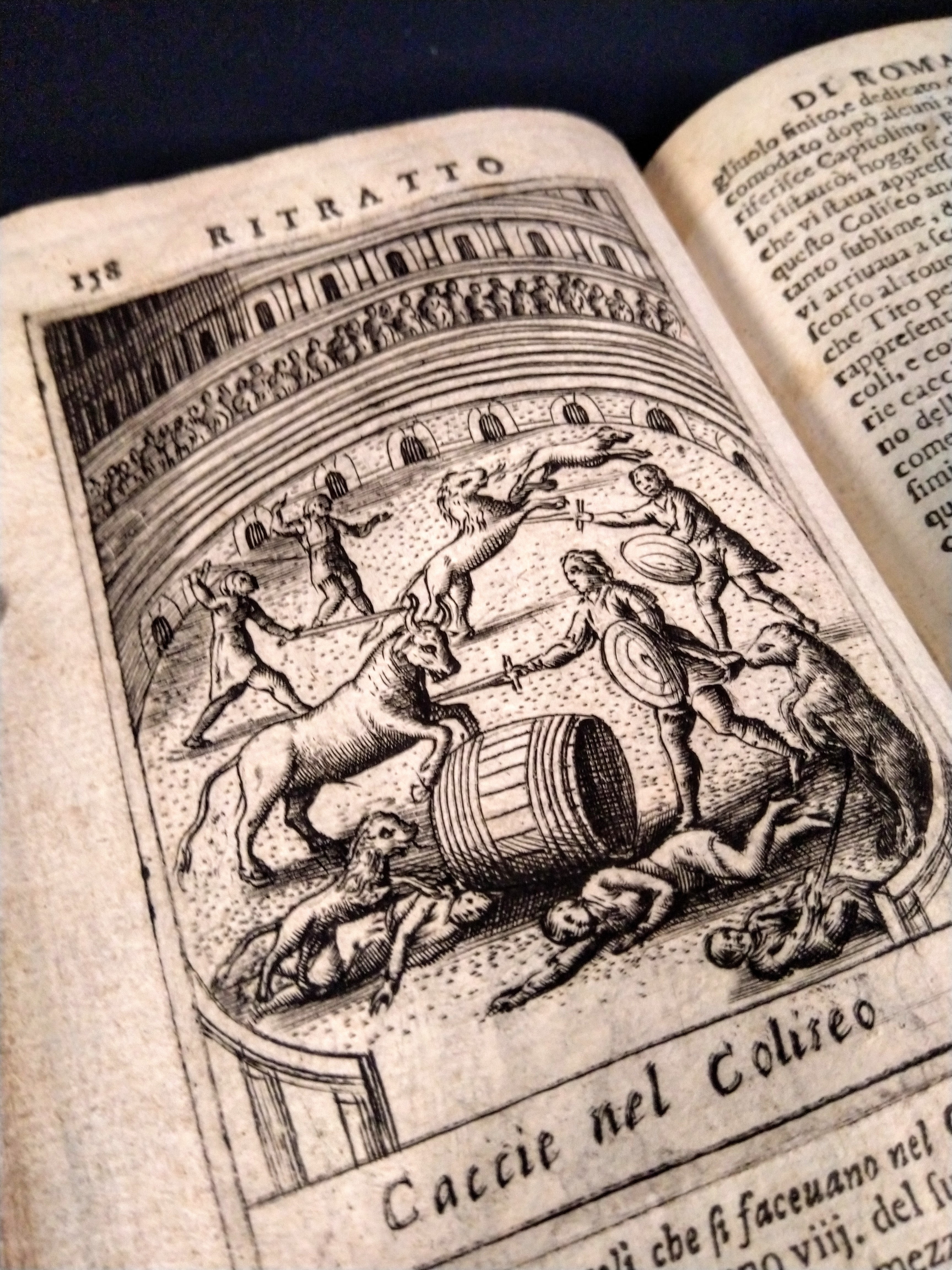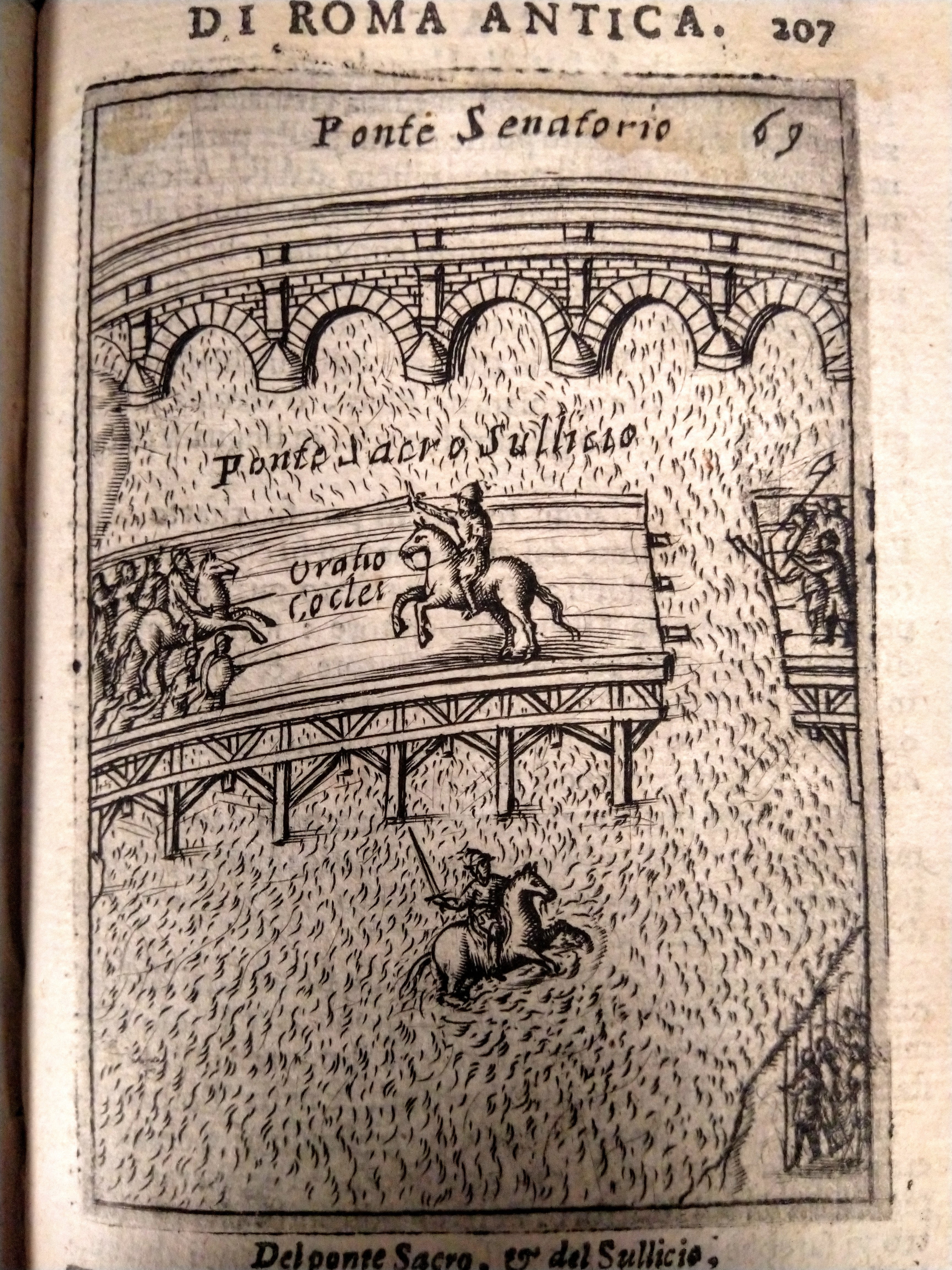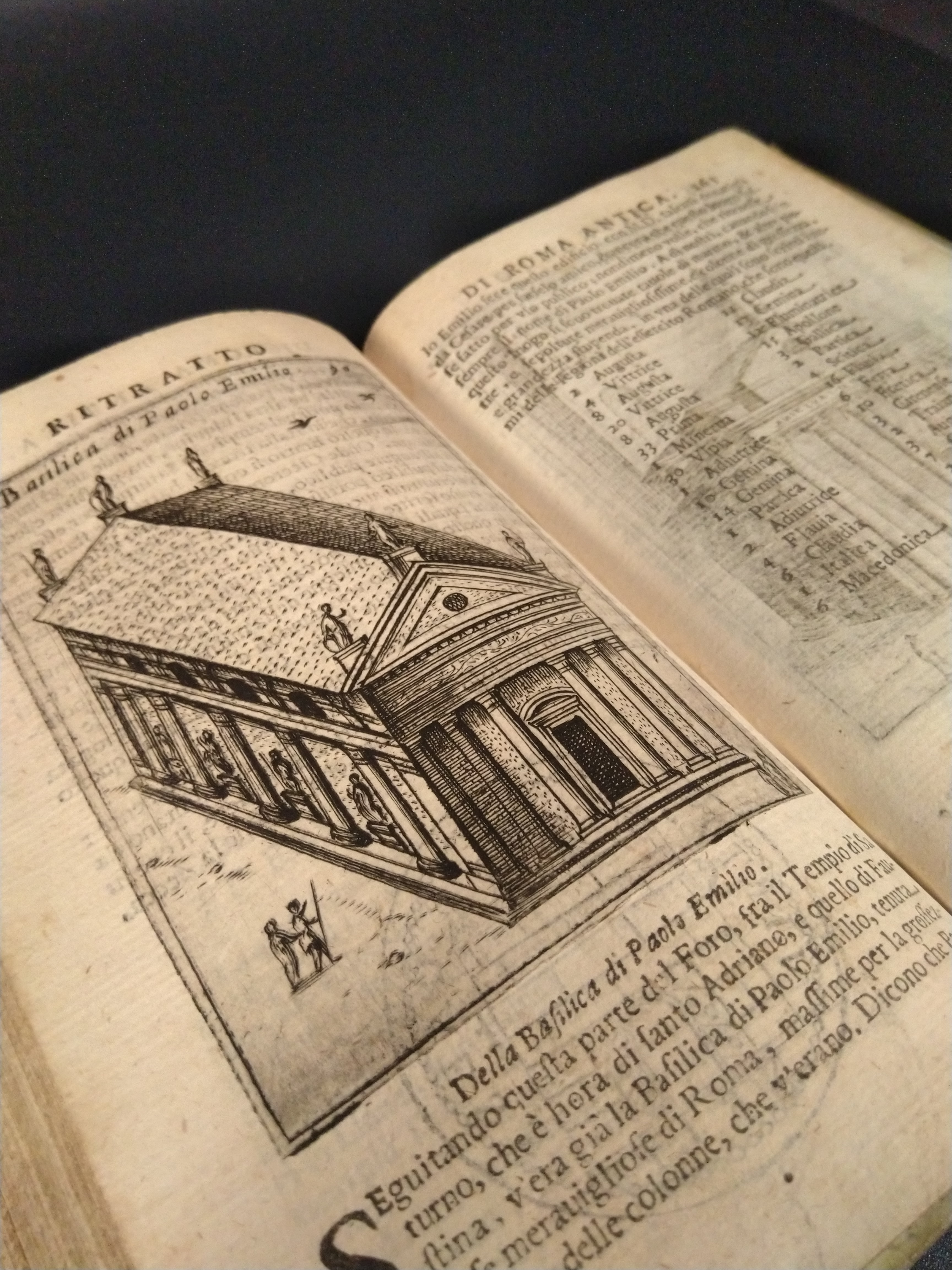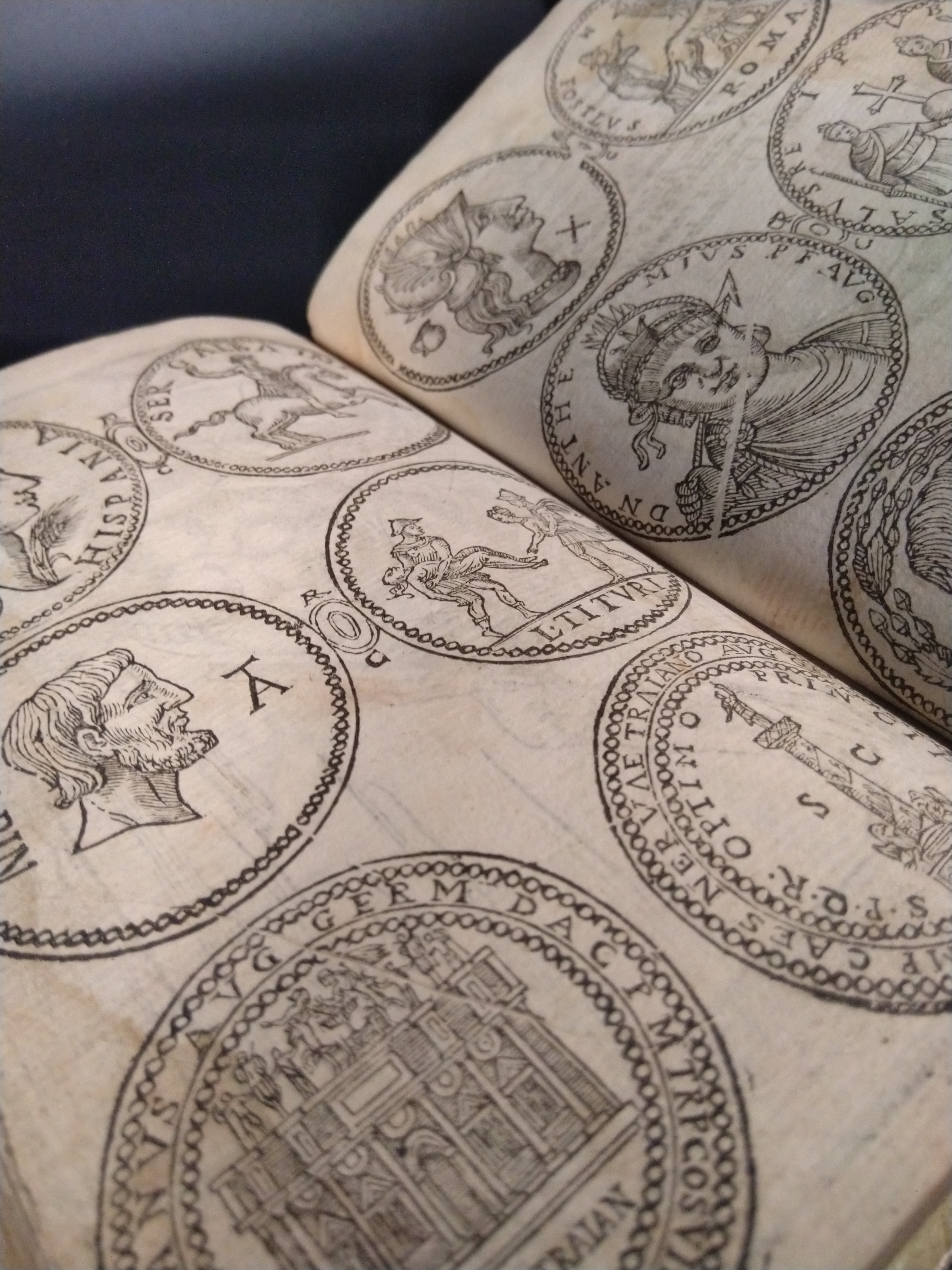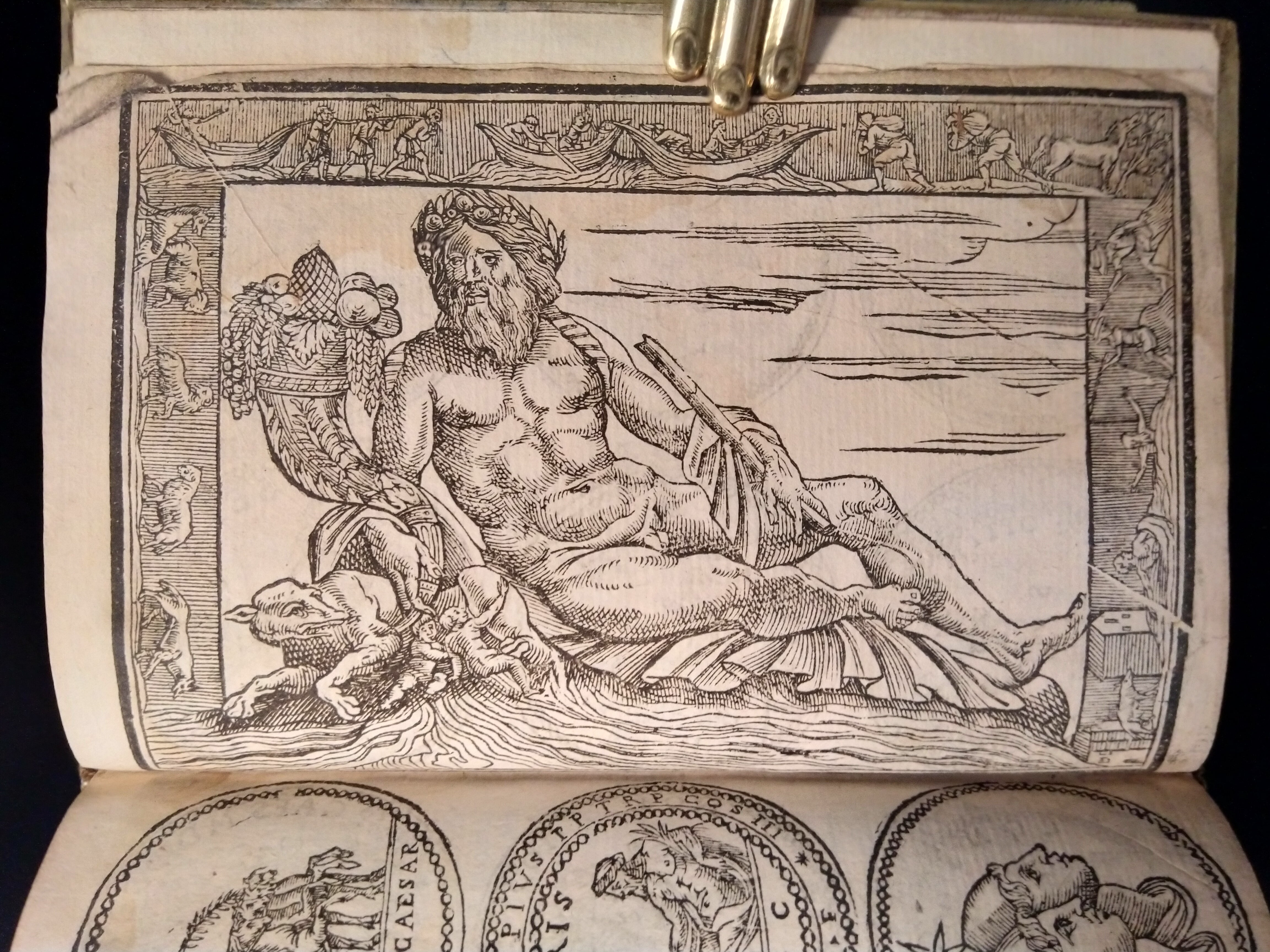TOTTI, Pompilio
LAVISHLY ILLUSTRATED GUIDE TO ROME
Ritratto di Roma antica.
Rome, Andrea Fei, 1627£1,750.00
FIRST EDITION. 8vo. pp. (xviii) 162 (vi). Roman letter, little Italic. Additional engraved t-p with female figure (city of Rome) flanked by the Pantheon, Colosseum, arms and Egyptian obelisks, arms of Ercole Trivulzio (?) below, woodcut Roman medal to t-p, 130 ¾-page plates with genealogy of Romulus, Roman buildings, coins and monuments, 144 woodcut medals of Roman Emperors, 2 full-page woodcut plates with male figures holding urn (rivers), decorated initials and ornaments. Outer edges a bit dusty and minimally trimmed, light water stain to upper outer corners and outer margins of last gathering, small hole to plate 82 (to remove the Sun), slight offsetting from plates, a few outer margins and verso of last somewhat finger soiled, slight marginal fraying to last three. A good copy in C17 vellum over boards, marbled eps, traces of yellow paint to covers, decorative double blind ruling, lozenge-shaped centrepiece and large fleurons to inner corners in blind, spine triple blind ruled in five compartments, modern bookplate to front pastedown.
Lavishly illustrated first edition of this handsome, detailed, early guidebook on ‘the principal temples, theatres, amphitheatres, circuses, sea battles, triumphal arches, curie, basilicas, columns, order of triumphs, military and civil dignities, rites, ceremonies, medals and other remarkable things’ of ancient Rome. With it, its obscure author, the Umbrian Pompilio Totti (1590-c.1644), sought to create ‘a portrait of ancient Rome both figured and animated’, bringing to life the antiquarian narratives of the city’s past through fresh images of its ruins, buildings, inscriptions, princes and inhabitants. The first few chapters, prefaced by an engraved genealogy, are devoted to Romulus, his founding and planning of the city; thence the narrative proceeds to the seven kings of Rome and their successors, interspersed with antiquarian digressions on Roman customs including weddings and military triumphs. The fine engravings, here in fresh impression, were based on the accounts of ancient historians, on contemporary works like Marliani’s ‘Antiquae Romae topographia’ and on Totti’s personal knowledge: e.g., an illustrated tripod was now ‘in the house of Signor Cavaliero Gualdo, and looked just as when it was unearthed in the baths of Paolo Emilio’. Sacrificial rites are illustrated with plates portraying a ritual scene and the numerous instruments used. The ‘colonna miliaria’, which stood ‘at the centre of Rome, mistress of the world’, was the ‘terminus’ of all the roads coming from and heading towards all the provinces and countries and kingdoms of the Empire. In the engraving it is accompanied by the lists of distances separating individual cities like Antioch or Constantinople from Rome. In Totti’s work, the topography of the past and the present blend, with extant monuments sharing the stage with buildings of which only scant references existed, such as the villa of Scipio the African. An engaging guidebook and a beautifully produced example of Renaissance antiquarianism.
BM STC It. C17, p. 917; Schudt, Guide di Roma, 181. BAL (1645 and 1697 eds). Not in Fowler or Berlin Cat.In stock






